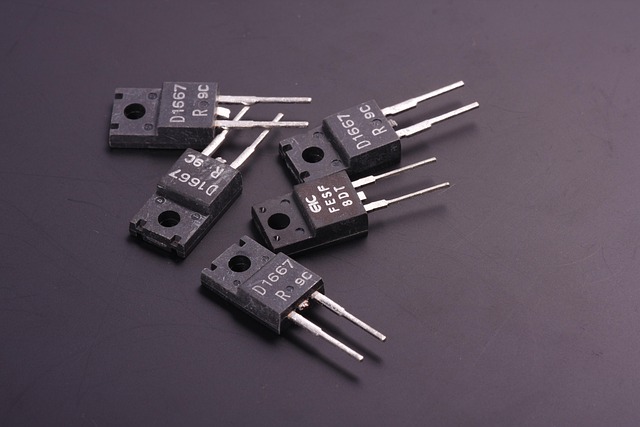Prevent Checkout Theft with Effective Anti-Theft Devices
Theft at checkout poses a significant challenge for retailers, prompting the use of various anti-theft devices like security tags, EAS systems, and motion sensors. Technology, including data encryptio…….

Theft at checkout poses a significant challenge for retailers, prompting the use of various anti-theft devices like security tags, EAS systems, and motion sensors. Technology, including data encryption, further strengthens security measures. Effective strategies involve training staff, empowering customers, and promoting anti-theft solutions to create a secure shopping environment, reduce loss, and protect merchandise and customer trust.
Thieves targeting retail stores can cause significant losses. Understanding common checkout theft methods is the first step in combating this issue. This article delves into effective strategies, focusing on anti-theft devices designed for retailers. From RFID tags to advanced surveillance systems, these tools aid in prevention. Additionally, exploring staff training and customer awareness programs strengthens security measures at the point of sale. Implement these tactics to safeguard your business from theft and ensure a secure shopping experience.
- Understanding Common Checkout Theft Methods
- Types of Anti-Theft Devices for Retailers
- Implementing Security Measures at Point of Sale
- Training Staff and Enhancing Customer Awareness
Understanding Common Checkout Theft Methods

Theft at checkout is a persistent issue for retailers, with various methods employed by dishonest individuals to pocket goods without paying. Understanding these common tactics is the first step in combating this problem. Shoplifters often use techniques like slingshotting, where they quickly grab items and propel them into bags or pockets before the staff can react. Another method is the use of anti-lift devices for retail, such as security tags that trigger alarms when attempted removal without deactivation. Some even employ distraction tactics, engaging employees in conversation while a partner steals.
In addition to these physical methods, technological advancements play a role in checkout theft. Motion sensor detectors and surveillance cameras are invaluable tools in deterring and identifying thieves. Furthermore, with the rise of digital transactions, laptop encryption software and other cybersecurity measures become critical for protecting sensitive data from those seeking to steal it, either for personal gain or as part of larger criminal schemes.
Types of Anti-Theft Devices for Retailers

Retailers have a range of anti-theft devices at their disposal to combat shoplifting at checkout. One of the most common and effective methods is the use of security tags, which can be attached to products and set off alarms if not properly deactivated. These tags are often combined with electronic article surveillance (EAS) systems that create a secure perimeter around the store, triggering alarms when potential thieves attempt to exit without removing or deactivating the tags.
Additionally, retailers can employ wireless door sensors that detect any unauthorized movement out of the store, providing an early warning system. For high-value items, security buckles for bags can be used to physically secure merchandise, making it more difficult for thieves to make off with them. Integrating data encryption hardware into these devices ensures that any stolen data remains secure and cannot be easily accessed or tampered with, further deterring potential criminals.
Implementing Security Measures at Point of Sale

Implementing robust security measures at the point of sale (POS) is an effective strategy to deter and prevent theft. Retailers can employ various anti-theft devices, such as electronic article surveillance (EAS) tags and anti-shoplifting displays, to create a secure shopping environment. These systems work in tandem with security labeling systems, ensuring that products are clearly marked and monitored as they move through the checkout process.
In addition, motion sensor detectors can be strategically placed to alert staff of any suspicious activity. By combining these technologies, retailers can enhance their anti-theft capabilities, reduce loss, and ultimately protect both their merchandise and customers’ trust.
Training Staff and Enhancing Customer Awareness

Effective anti-theft measures go beyond security systems; they involve empowering both staff and customers to combat theft at checkout. Training retail staff to identify suspicious behavior and implement preventive strategies is crucial. This includes teaching them to anticipate common thief techniques, such as using hidden pockets solutions or RFID blocking wallets, and to communicate effectively with customers without causing alarm.
Moreover, enhancing customer awareness plays a significant role in deterring theft. Retailers can promote wallet protection devices and educate shoppers on how to secure their belongings while shopping. Simple reminders about leaving valuable items unattended and the consequences of theft can significantly reduce incidents, fostering an environment where everyone feels responsible for preventing shoplifting.
Preventing theft at checkout involves a multi-layered approach. By understanding common theft methods, investing in effective anti-theft devices tailored to specific needs, training staff to spot suspicious behavior, and educating customers on store policies, retailers can significantly reduce loss and enhance the shopping experience for everyone. Implementing these strategies creates a secure environment, turning your store into a safer, more vibrant retail space.







